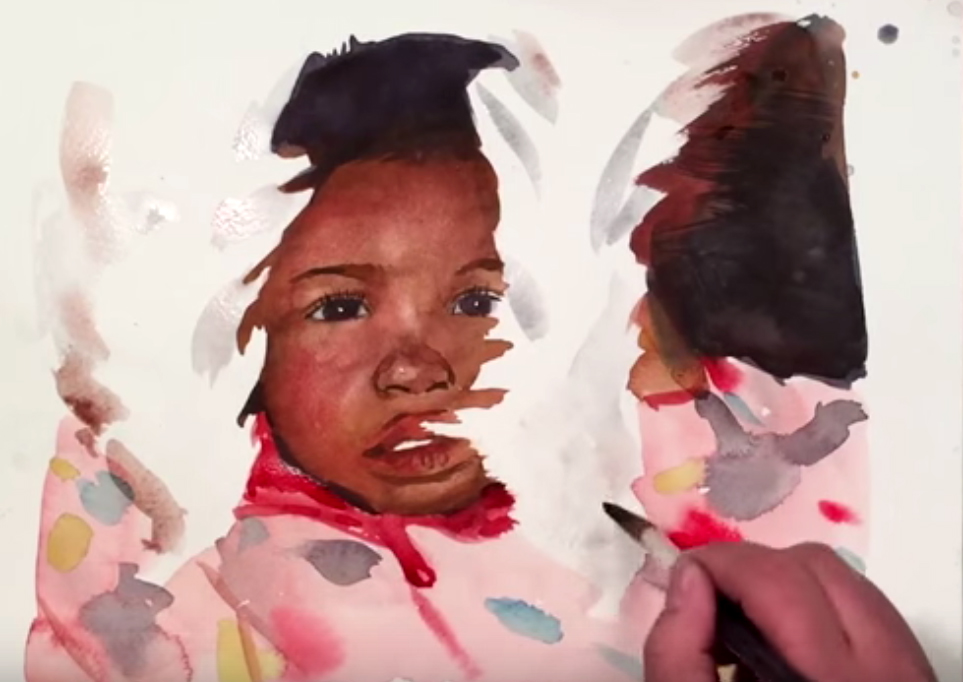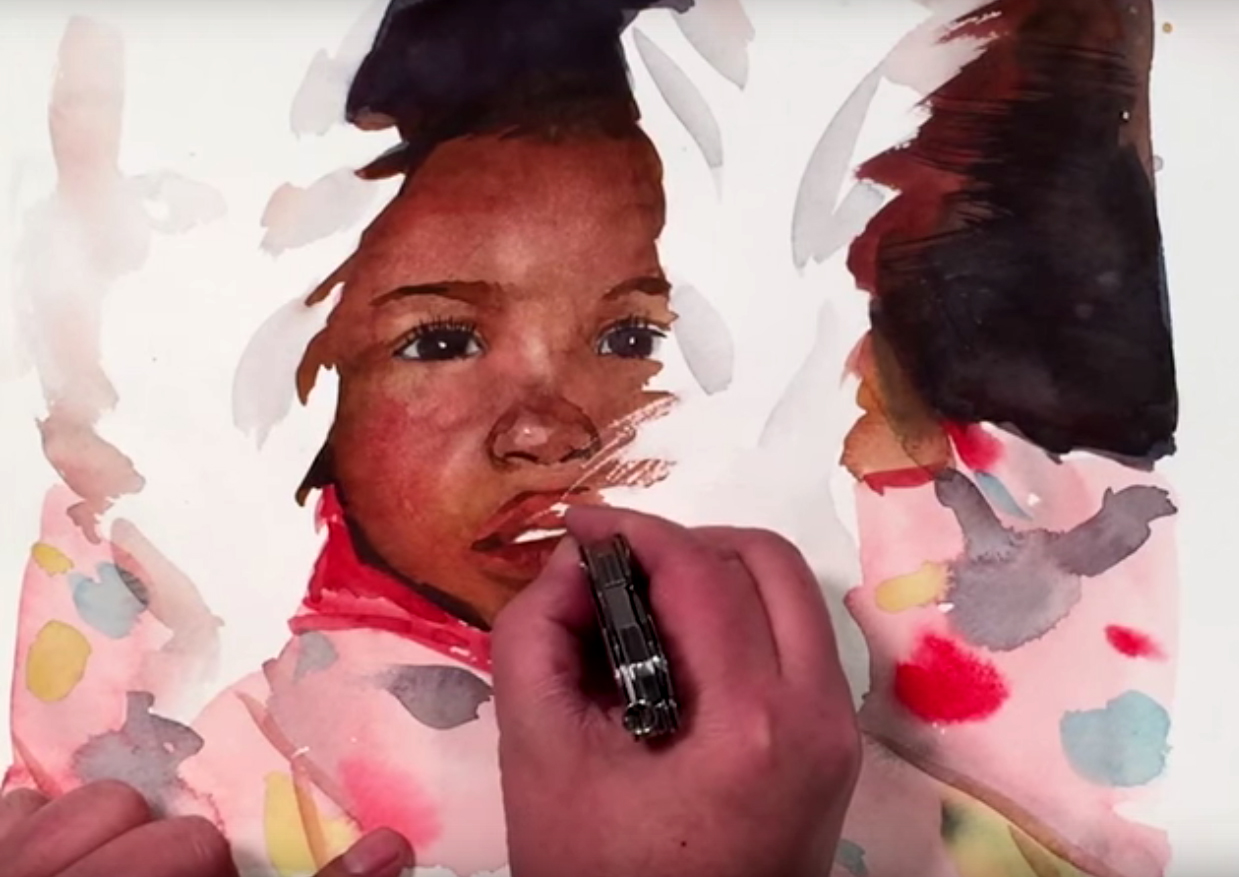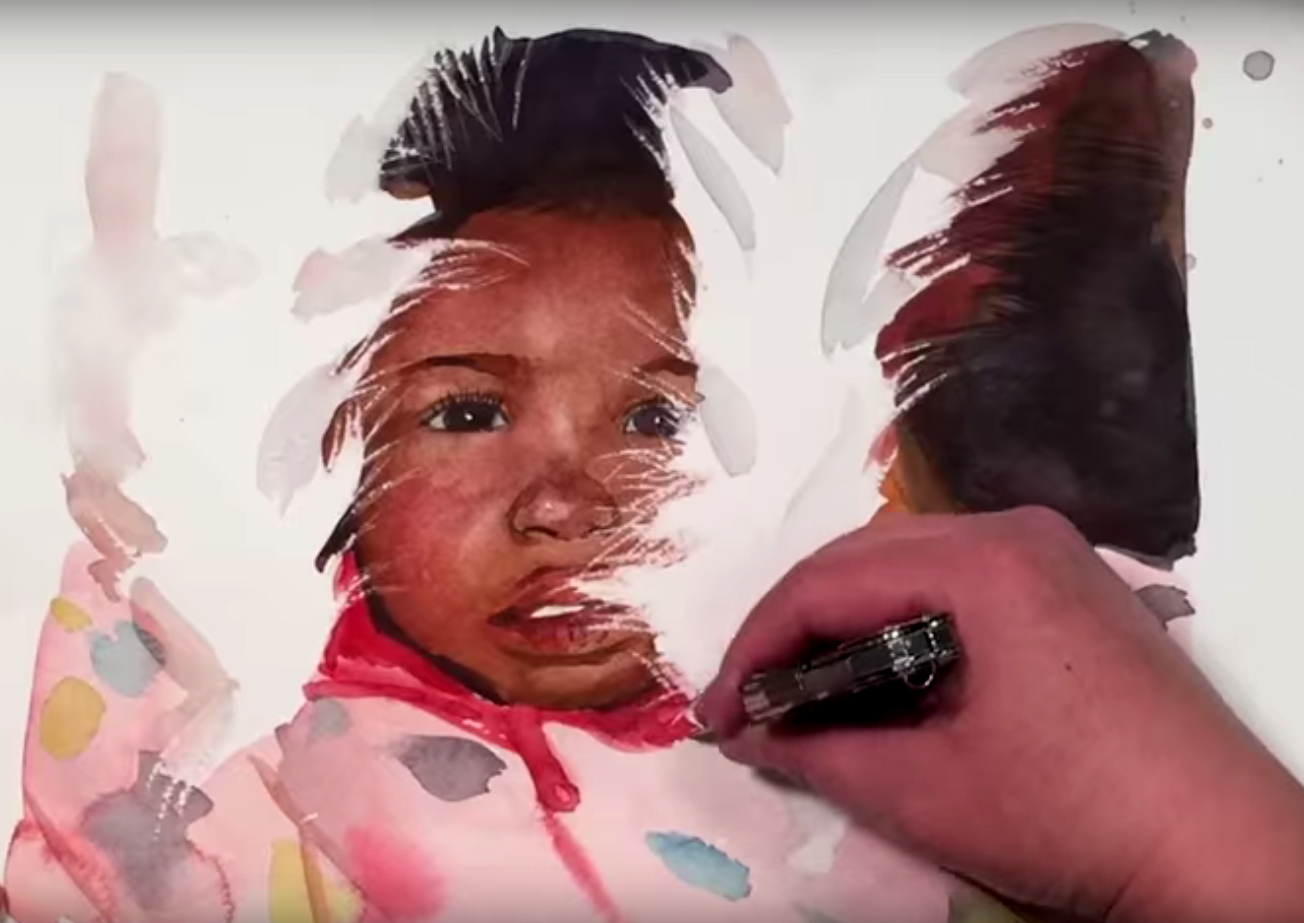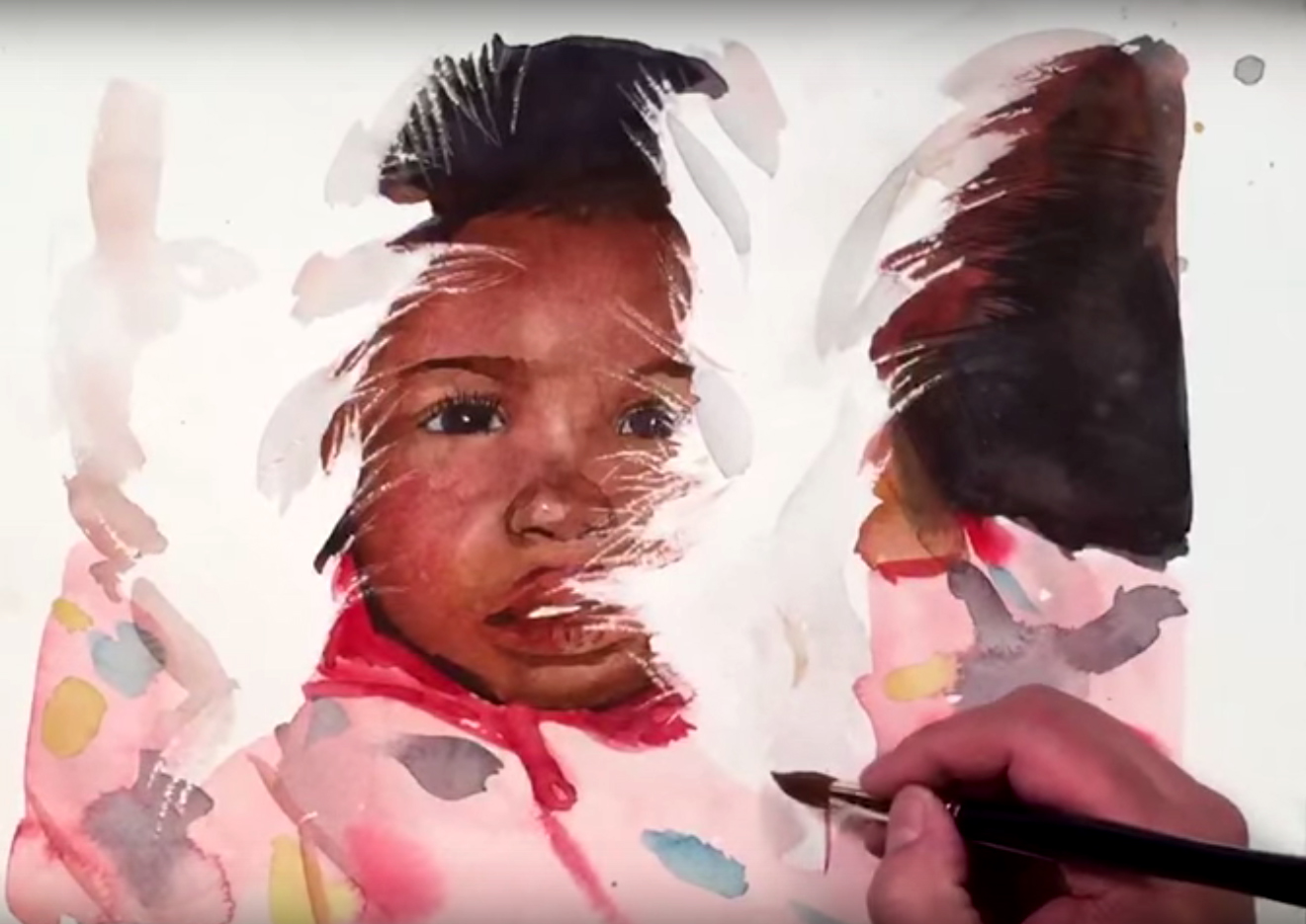Discover an untraditional watercolor technique for painting white fur in Yong Chen's dry scratching tutorial. It involves sharp objects, so be careful!
Materials used:
- Reference picture of a subject with white fur included
- An almost complete painting of the reference picture on watercolor paper (excluding the areas where the white fur appears)
- Painting palette with preferred watercolor paints
- Set of watercolor brushes (mainly round brushes, sizes 2-12)
- Two cups of water
- A towel or rag to dry off the brushes
- Pocket knife
Step 1:
 With your reference picture as a guide, finish a painted version of it on watercolor paper, leaving areas white where you want most of the fur to appear. You can paint a few tapered strokes of watered-down paint for shadowed areas on the fur. When you're satisfied, leave the paint to dry.
With your reference picture as a guide, finish a painted version of it on watercolor paper, leaving areas white where you want most of the fur to appear. You can paint a few tapered strokes of watered-down paint for shadowed areas on the fur. When you're satisfied, leave the paint to dry.
Step 2:
 After the painting is completely dry, hold a pocket knife at a 45-60° angle to the paper and start scratching with the blade's tip, always starting from the white areas and ending in the painted areas. Rotate the paper when you need more control, and scratch in even, controlled, and tapered strokes that vary slightly in length and width (depending on how long the fur is). Scratch over the same area until the white paper shows through; it's better to gently scratch the same area several times than scratching too hard once and causing the paper to tear. Keep brushing off any residue to keep a clear idea of where you're scratching.
After the painting is completely dry, hold a pocket knife at a 45-60° angle to the paper and start scratching with the blade's tip, always starting from the white areas and ending in the painted areas. Rotate the paper when you need more control, and scratch in even, controlled, and tapered strokes that vary slightly in length and width (depending on how long the fur is). Scratch over the same area until the white paper shows through; it's better to gently scratch the same area several times than scratching too hard once and causing the paper to tear. Keep brushing off any residue to keep a clear idea of where you're scratching.
Step 3:
 Follow in the same direction as the fur - keep looking to your reference picture if you need a guide, although you can always change your composition from the reference if needed. The important point is to capture the feeling you want your art to give to its viewers. You can even try using different types of knives, although make sure to experiment with them beforehand - the dry scratching technique is one where you can't fix any mistakes, so be careful and patient when using it. And remember: scratch, don't cut!
Follow in the same direction as the fur - keep looking to your reference picture if you need a guide, although you can always change your composition from the reference if needed. The important point is to capture the feeling you want your art to give to its viewers. You can even try using different types of knives, although make sure to experiment with them beforehand - the dry scratching technique is one where you can't fix any mistakes, so be careful and patient when using it. And remember: scratch, don't cut!
Step 4:
 When you've finished scratching, you can paint on a few suggestions of fur with a brush and watered-down paint, especially in the shaded areas. Special thanks to Yong Chen for sharing this technique in his video tutorial.
When you've finished scratching, you can paint on a few suggestions of fur with a brush and watered-down paint, especially in the shaded areas. Special thanks to Yong Chen for sharing this technique in his video tutorial.



